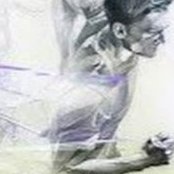-
Recently Browsing 0 members
- No registered users viewing this page.
Announcements
-
Topics
-
Latest posts...
-
48
Burmese man condemned for preaching Christianity to Buddhist novices
Here on KP we have a Russian Orthodox Church and a Christian Church I am not a churchgoer but I occasionally go to my local temple to make merit even though I am an Irish Christian Monks can walk the streets and offer prayers in return for food so I can’t understand why a Christian believer should cause upset by introducing Christianity to those who are undecided. I know a number of Thais who have become Christians. ! -
1
Where to travel in Thailand in October
Less rain in October? I always consider this one of the wettest months here. The raining season is usually slowing down in November. -
16
Chula university cancels launch of book critical of Thai military
An exaggeration. The most stable that Thailand has ever been since the restoration of the Monarchy, has been when the Military have been in charge, restraining the Thai rich Elite. The last manifestation of this, with Prayut in change has seen economic progress, infrastructure progress and an excellent, measured response to Covid. I would take a Military government over any civil administration here. By the wat, the Thai Marines are some of the best in the World, with an high reputation as jungle troops. -
3,424
President Kamala Harris
Democrats Kamala Harris, Bob Casey lead Donald Trump, Dave McCormick in new Pennsylvania poll As Kamala Harris grows a national lead, the state polls should likewise show growing leads for her. +4 in Pennsylvania. -
96
Staying abroad, change your mobile phone, how to keep the Thai bank apps working?
If PEA is your power provider, you can just take a photo of the bar code on an old bill and keep it in your phone and then use that to pay the bill with KBank app. That worked for me a couple of years ago when the PEA meter reader left the neighbor's bill in our mailbox and our's was lost. -
111
Elderly Australian Caught Stealing Vitamin C in Chonburi
Umm. Why in the world is this nothing story headlined as one of the top two stories of the day? Oh, wait. It has a Pattaya angle. Never mind. Meanwhile, this Aussie should decamp for northern Virginia, where I used to live. According to my brother-in-law, who ran a pharmacy there, police will not respond to store thefts unless the amount of merchandise stolen amounts to $150. Bottle of Vitamin C? Good to go. -
0
Top Trending EV Cars in Thailand
Photo via: Yale climate connections official website Thailand is quickly emerging as a key player in the electric vehicle (EV) industry, fueled by government incentives, an expanding charging network, and growing consumer awareness of the environmental advantages of EVs. As the nation pursues a shift towards sustainable transportation, numerous EV models have captured the interest of Thai buyers. This article delves into the leading EV cars trending in Thailand, examining their features, pricing, and market trends. Top 8 trending EV cars in Thailand Deepal s07 Photo via: Wikepedia The Deepal S07 is an electric SUV from Changan’s Deepal brand, recently launched in Thailand. It stands out with its futuristic design and advanced technology features, making it a competitive option in the growing electric vehicle market. The S07 is equipped with a 66.8 kWh battery, providing a range of up to 560 km for the L variant, and offers a suite of modern amenities aimed at enhancing the driving experience. Deepal s0 ev cost breakdown in Thailand Cost Component Deepal S07 (THB) Purchasing Price 1,499,000 Charging Costs Estimated monthly: ~1,500 Maintenance Minimal (8 years/200,000 km warranty) Additional Charges Free insurance for 1 year Free home charger with installation 5 years of roadside assistance Reasons to purchase the Deepal s0 Impressive Range: With a range of up to 560 km, the Deepal S07 is suitable for both urban commuting and longer trips. Futuristic Design: The SUV features a modern aesthetic with an enclosed front-end design and stylish air vents, appealing to younger consumers. Advanced Technology: Equipped with a 15.6-inch touchscreen, AR HUD system, and high-performance Snapdragon 8155 chip for seamless operation. Comprehensive Safety Features: Includes a full suite of driver assistance systems such as adaptive cruise control, AEB, and multiple airbags for enhanced safety. Luxurious Interior: The wraparound cockpit design and high-quality materials create an upscale feel that rivals luxury vehicles. Neta x Photo via: cnevpost official website The Neta X is a compact electric SUV recently launched in Thailand, designed to cater to the growing demand for electric vehicles in the region. This model is an upgraded version of the Neta U, featuring a modern design and advanced technology tailored for local markets. The Neta X is available in two battery options, providing a competitive range and a suite of smart features aimed at enhancing the driving experience. Neta x ev cost breakdown in Thailand Cost Component Neta X (THB) Purchasing Price 739,000 – 799,000 Charging Costs Estimated monthly: ~1,500 Maintenance Minimal (5 years/150,000 km warranty) Additional Charges Free insurance for 1 year Free home charger with installation Free motor and battery warranty for 8 years or 180,000 km Reasons to purchase the Neta x Advanced Technology: Features a 15.6-inch floating central control screen and an L2-level driving assistance system for enhanced safety and convenience. Smart Connectivity: Supports multi-language voice control, online navigation, and mobile app integration for vehicle control. Comprehensive Warranty: Offers a five-year warranty covering general vehicle issues and an eight-year warranty for the motor and battery. Free Charging Equipment: Includes a complimentary home charger with installation, adding value to the purchase. Spacious Interior: Designed with ample interior space and functionality to accommodate modern lifestyles. Xiaomi ev car Photo via: HT auto official website Xiaomi, the tech giant known for its smartphones, has recently entered the electric vehicle (EV) market with its highly anticipated model, the Xiaomi SU7. This sporty sedan is set to shake up the Thai EV landscape with its impressive performance, advanced technology, and competitive pricing. The SU7 comes in two variants, the Base and the Max, each offering a unique blend of power, efficiency, and style. Xiaomi ev car cost breakdown in Thailand Cost Component Xiaomi SU7 Base (THB) Xiaomi SU7 Max (THB) Purchasing Price Estimated: 2,000,000+ Estimated: 2,500,000+ Charging Costs Estimated monthly: ~2,000 Estimated monthly: ~2,500 Maintenance Minimal (warranty coverage) Minimal (warranty coverage) Additional Charges Free insurance for 1 year Free insurance for 1 year Free home charger with installation Free home charger with installation 5 years of roadside assistance 5 years of roadside assistance Reasons to purchase the Xiaomi ev car Impressive Performance: The SU7 Max can accelerate from 0 to 100 km/h in just 2.78 seconds and has a top speed of 265 km/h, rivalling high-performance vehicles. Long Range: The SU7 Max offers a range of up to 800 km on a single charge, making it suitable for long-distance travel. Advanced Technology: Features a 16.1-inch centre screen, 7.1-inch rear passenger screen, 56-inch head-up display, and advanced driver assistance systems powered by Nvidia Orin-X chip. Spacious Interior: Offers ample storage space with 105 litres under the front hood and 517 litres in the rear boot, accommodating various luggage needs. Competitive Pricing: Despite its performance and features, the Xiaomi SU7 is expected to be priced competitively compared to other high-end EVs in the market. Huawei ev car Photo via: Autocar India official website Huawei has recently ventured into the electric vehicle (EV) market with its premium brand, Aito, in collaboration with Seres. The Aito models, such as the M5 and M7, showcase Huawei’s commitment to integrating advanced technology and smart features into their vehicles. These EVs are equipped with cutting-edge connectivity options, including a robust infotainment system that leverages Huawei’s expertise in telecommunications. As the demand for electric vehicles grows in Thailand, Huawei aims to establish a strong presence by offering vehicles that not only deliver performance but also enhance the driving experience through smart technology. Huawei ev car cost breakdown in Thailand Cost Component Aito M5 (THB) Aito M7 (THB) Purchasing Price Estimated: 1,200,000+ Estimated: 1,500,000+ Charging Costs Estimated monthly: ~1,800 Estimated monthly: ~2,200 Maintenance Minimal (5 years/150,000 km warranty) Minimal (5 years/150,000 km warranty) Additional Charges Free insurance for 1 year Free insurance for 1 year Free home charger with installation Free home charger with installation 5 years of roadside assistance 5 years of roadside assistance Reasons to purchase the Huawei ev car Innovative Infotainment System: Equipped with a state-of-the-art infotainment system that enhances user experience through intuitive controls and connectivity options. Comprehensive Warranty: Offers a five-year warranty covering general vehicle issues and an eight-year warranty for battery performance. Free Charging Equipment: Includes a complimentary home charger with installation, adding value to the purchase. Sustainability Focus: As an electric vehicle, it contributes to reducing carbon emissions and supports environmentally friendly driving practices. Government Support: Backed by Thailand’s initiatives to promote EV adoption through incentives and infrastructure development. Jaecoo 6 ev Photo via: Carbike360.ae official website The Jaecoo 6 EV is a newly launched electric vehicle from Chery’s Jaecoo brand, designed to appeal to consumers looking for a stylish and functional SUV. Its boxy design resembles that of the Land Rover Defender, and it comes in two variants: Long Range 2WD and Long Range 4WD. The Jaecoo 6 is equipped with modern technology and offers a range of features aimed at enhancing the driving experience. Advertisements Jaecoo 6 ev cost breakdown in Thailand Cost Component Long Range 2WD (THB) Long Range 4WD (THB) Purchasing Price 1,099,000 1,249,000 Charging Costs Estimated monthly: ~1,500 Estimated monthly: ~1,800 Maintenance Minimal (8 years/200,000 km warranty) Minimal (8 years/200,000 km warranty) Additional Charges Free insurance for 1 year Free insurance for 1 year Free home charger with installation Free home charger with installation 5 years of roadside assistance 5 years of roadside assistance Reasons to purchase the Jaecoo 6 EV Distinctive Design: Its boxy shape and rugged aesthetics set it apart from other electric SUVs. Competitive Pricing: Starting at THB 1,099,000, it offers an attractive price point compared to similar models. Robust Warranty: An extensive eight-year or 200,000 km warranty covers the vehicle, battery, and motors. Free Charging Equipment: Comes with a complimentary home charger and installation, making it convenient for new owners. Advanced Technology: Features include a large infotainment touchscreen, V2L capability (Vehicle-to-Load), and various driving modes. Omoda c5 ev Photo via: Carwow official website The Omoda C5 EV is an innovative electric vehicle recently launched in Thailand, representing a significant advancement in the local EV market. This stylish SUV is designed with modern aesthetics and is powered by a robust electric motor, delivering 204 horsepower and 340 Nm of torque. The Omoda C5 features a 61 kWh lithium iron phosphate battery, providing a driving range of up to 430 km on a single charge. With a top speed of 172 km/h and the ability to accelerate from 0 to 100 km/h in just 7.2 seconds, the C5 EV combines performance with practicality. Advertisements Omoda c5 ev cost breakdown in Thailand Cost Component Omoda C5 Long Range Plus (THB) Omoda C5 Long Range Ultimate (THB) Purchasing Price 899,000 949,000 Charging Costs Estimated monthly: ~1,800 Estimated monthly: ~2,000 Maintenance Minimal (8 years/200,000 km warranty) Minimal (8 years/200,000 km warranty) Additional Charges Free insurance for 1 year Free insurance for 1 year Free home charger with installation Free home charger with installation Free roadside assistance (5 years) Free roadside assistance (5 years) Reasons to purchase the Omoda c5 ev Advanced Technology: Equipped with dual 12.3-inch displays and smart connectivity options including Android Auto and Apple CarPlay. V2L Capability: The vehicle-to-load function allows users to power external devices, enhancing its versatility for outdoor activities. Comprehensive Warranty: An extensive warranty covering eight years or 200,000 km ensures peace of mind for owners. Free Charging Equipment: Includes a complimentary home charger with installation, adding value to the purchase. Roadside Assistance: Five years of free roadside assistance provides additional security for drivers. Zeekr Photo via: Wikepedia Zeekr, the premium electric vehicle brand under Geely Holding Group, has made its debut in Thailand with the introduction of the Zeekr X urban SUV and the Zeekr 009 multi-purpose vehicle (MPV). These vehicles are designed to cater to the increasing demand for high-quality electric mobility solutions in Southeast Asia. The Zeekr X combines cutting-edge technology with a sleek design, offering features such as advanced driver assistance systems and a spacious interior. The Zeekr 009, on the other hand, emphasizes luxury and comfort, making it suitable for families and those seeking a more premium experience. Both models are equipped with powerful electric drivetrains, ensuring impressive performance and efficiency. With plans to establish a robust dealership network and partnerships with local charging service providers, Zeekr aims to enhance the EV ownership experience in Thailand. Zeekr cost breakdown in Thailand Cost Component Zeekr X (THB) Zeekr 009 (THB) Purchasing Price 1,199,000 1,799,000 Charging Costs Estimated monthly: ~1,500 Estimated monthly: ~2,000 Maintenance Minimal (5 years warranty) Minimal (5 years warranty) Additional Charges Free insurance for 1 year Free insurance for 1 year Free home charger with installation Free home charger with installation 5 years roadside assistance 5 years roadside assistance Reasons to purchase the Zeekr Premium Quality: Both the Zeekr X and Zeekr 009 are crafted with high-quality materials and advanced technology, providing a luxurious driving experience. Innovative Technology: Equipped with state-of-the-art infotainment systems and advanced driver assistance features that enhance safety and convenience. Strong Performance: The vehicles offer impressive acceleration and range, making them suitable for both city driving and longer journeys. Local Support Network: With plans for a robust dealership network and partnerships with local charging providers, customers can expect excellent service and support. Sustainability Focus: As electric vehicles, they contribute to reducing carbon emissions and promote environmentally friendly transportation solutions. Changan Photo via: Technode official website Changan, a prominent Chinese automaker, has made significant strides in the Thai electric vehicle (EV) market with the introduction of its premium brand AVATR and the launch of several models under its own name. The AVATR 11, an SUV coupe, made its debut in Thailand, showcasing Changan’s commitment to bringing advanced technology and luxurious design to the country’s upscale automotive segment. Changan has also introduced the Deepal L07, S07, and Lumin L models, catering to a wide range of consumer preferences. Changan cost breakdown in Thailand Cost Component AVATR 11 (THB) Deepal S07 (THB) Purchasing Price Estimated: 2,000,000+ Estimated: 1,499,000 Charging Costs Estimated monthly: ~2,000 Estimated monthly: ~1,500 Maintenance Minimal (warranty coverage) Minimal (8 years/200,000 km warranty) Additional Charges Free insurance for 1 year Free insurance for 1 year Free home charger with installation Free home charger with installation 5 years roadside assistance 5 years roadside assistance Reasons to purchase the Changan Innovative Technology: Changan integrates cutting-edge technology in its vehicles, enhancing connectivity and driving experience. Luxurious Design: The AVATR 11 features a sleek and modern design that appeals to consumers seeking premium aesthetics. Strong Performance: Both models offer impressive acceleration and range, catering to diverse driving needs. Comprehensive Warranty: The Deepal series offers an extensive warranty of eight years or 200,000 km, ensuring reliability. Local Production Plans: With a factory set to open in Thailand, Changan will provide locally produced vehicles, supporting the economy and reducing costs. Comparing specifications Vehicle Name Design Performance Unique Selling Point Additional Details Jaecoo 6 EV Boxy and rugged SUV 204 hp, 0-100 km/h in approximately 7.5 seconds, range of up to 500 km. V2L capability for powering external devices. Spacious interior with modern safety features. Deepal S07 Sleek and modern SUV 204 hp, 0-100 km/h in about 7.5 seconds, range of up to 560 km. High-tech features powered by Huawei technology. Luxurious interior with advanced connectivity options. Neta X Compact and contemporary SUV 204 hp, range of up to 410 km, designed for urban commuting. Affordable pricing for a feature-rich EV. Smart connectivity and spacious cabin layout. Xiaomi EV Car Modern sedan/SUV hybrid Up to 204 hp, top speed around 265 km/h, an impressive range of up to 800 km. High performance with cutting-edge technology. Advanced infotainment system with seamless connectivity features. Huawei EV Car Premium and luxurious SUV Performance varies by model; generally offers strong acceleration and competitive range. Integration of Huawei’s smart technology throughout the vehicle. Focus on luxury amenities and advanced driver-assistance systems. Omoda C5 EV Stylish compact SUV Produces 204 hp, offers a range of up to 430 km, and accelerates from 0-100 km/h in about 7.2 seconds. V2L function for outdoor utility and convenience. Dual displays enhance user experience with infotainment features. Zeekr Premium SUV with high-quality materials Performance varies; generally offers high horsepower and long-range capabilities across models. High-quality construction with advanced tech integration. Strong focus on luxury features and comprehensive safety systems. Changan Modern and eco-friendly SUV Performance varies; generally offers competitive horsepower and impressive driving ranges across models. Plans for local production to enhance availability. Extensive warranty coverage and commitment to sustainability practices. Where to buy the electric vehicles in Thailand Great Wall Motor Thailand Photo via: Google Maps Address: 14/14 Thanon Charat Mueang, Khwaeng Rong Muang, Pathum Wan, Krung Thep Maha Nakhon 10330, Thailand. Opening Hours: Everday at 8 am–6 pm This is the official dealership network for Wuling in Thailand. They offer a wide range of Wuling models, including the Air EV. You can find their dealerships across the country. Online platforms Kaidee Auto: Browse used and new electric vehicles from various sellers on Kaidee Auto. This platform offers a wide selection and competitive pricing. One2car: Use One2car to compare prices and features of different EV models. The site provides detailed specifications and user reviews. Other useful resources about automotive in Thailand Buying a car in Thailand Selling car in Thailand Automotive Laws and Regulations in Thailand Motorbike rules Thailand Motorcycle Rules in Bangkok Buying a motorcycle in Thailand Selling a motorcycle in Thailand Based on an original from The Thaiger -
-
5
Gold price
It's really only since the early 20th century that platinum was valued higher due to its rarity, but, perversely, the relative abundance of gold vs platinum was what made gold the historically accepted currency - it was far more practical to mint gold coins than platinum ones. Gold has retained that status, and continues to be seen as a safe haven in times of uncertainty, which we are definitely in today with BRICS wanting to establish a commodities backed (predominantly gold) reserve currency, and the US at the point where annual interest owed on debt is equal to military spending. Something is going to give, and gold is seen as the place to be when it happens. Central banks certainly see it that way, and their buying is in part what is fuelling the rise in price: Central Banks | World Gold Council The historical comparison of gold vs platinum also tells the story. For the 19th, and much of the first half of the 20th, centuries, when the British controlled the world reserve currency, gold was artificially pegged in order to prevent volatility. (While platinum was virtually valueless during the 19th). It then found its own level during and after WW2, as Britain lost hegemony. It achieved parity with platinum during WW2, and again during the inflationary period of the 1970s. The 2008 GFC saw the beginning of its rise above platinum, and the uncertainty caused by Covid sealed its higher position. With the Ukraine war, the now accepted use of gold as a petrocurrency, and continuing US financial uncertainty, it is expected by many to keep rising. On the other hand, platinum, having no such financial safe haven value, continues to be priced according to its demand for jewellery, electronics, and other minor uses. Platinum Price vs Gold Price Ratio | 125 Year Chart (sdbullion.com) -
6,603
-
3
Thailand Embraces Larger Super Yachts to Boost Marine Tourism
For a mariner with a significant yacht, Thailand would have to be one of the most boring areas in the world for yachting. The entire seaboard possesses very few marinas, there are very few areas of interest along the Gulf Coast, and on the east coast between Singapore and Bangkok there's really not much to see. Nah. The yacht community has very little interest. Bad idea. -
15
THAILAND LIVE Thailand Live Tuesday 24 September 2024
Lawyer Warns Entire Paetongtarn Cabinet Faces Impeachment Risk Thailand’s Deputy Prime Minister Phumtham Wechayachai, left, talks to Thailand's Prime Minister Paetongtarn Shinawatra before making the policy statement at parliament in Bangkok, Thailand, Thursday, Sept. 12, 2024. Paetongtarn appeared Parliament for the first time to lay out how her government envisions to improve the country. (AP Photo/Sakchai Lalit) A lawyer has sounded the alarm that Prime Minister Paetongtarn Shinawatra's entire cabinet could face impeachment following a complaint regarding an incomplete policy statement delivered in Parliament on September 12. Full story: https://aseannow.com/topic/1338950-lawyer-warns-entire-paetongtarn-cabinet-faces-impeachment-risk/ -
9
14-Year-Old Girl Fatally Stabs Grandmother Following Heated Argument
Did you understand what you read in the news? That means, you believe, it´s just to be an arse just as long you live to get old you will finally get respect. Do you understand how stupid that sounds? -
111
Elderly Australian Caught Stealing Vitamin C in Chonburi
Third time, he is guilty of theft. No sympathies from me. However, is store policy of charging 10X the amount of the item stolen, law? Somehow, I doubt it. -
0
Lawyer Warns Entire Paetongtarn Cabinet Faces Impeachment Risk
Thailand’s Deputy Prime Minister Phumtham Wechayachai, left, talks to Thailand's Prime Minister Paetongtarn Shinawatra before making the policy statement at parliament in Bangkok, Thailand, Thursday, Sept. 12, 2024. Paetongtarn appeared Parliament for the first time to lay out how her government envisions to improve the country. (AP Photo/Sakchai Lalit) A lawyer has sounded the alarm that Prime Minister Paetongtarn Shinawatra's entire cabinet could face impeachment following a complaint regarding an incomplete policy statement delivered in Parliament on September 12. The warning was issued in a Facebook post by Mr. Paisarn Puechmongkol, a former assistant to Palang Pracharath leader Prawit Wongsuwan, and was reported by Naewna newspaper. The complaint alleges that the policy statement contravened Article 162 of the Constitution by failing to specify the sources of revenue to cover the proposed expenses. This shortfall, according to Paisarn, could potentially trigger impeachment proceedings by the Constitutional Court against all cabinet members. Paisarn described the current mood as panicked, with no clear decision yet on how to address the issue. He warned that if the policy statement is not amended to comply with constitutional requirements, the entire cabinet risks impeachment. The Ombudsman has a 60-day window to file a petition to Thailand's Constitutional Court, should this remain unresolved. Opinions are divided on how to move forward. Some believe the government should call another parliamentary session to amend the policy statement and align it with Article 162. Others argue that making such amendments would cause a loss of face and that the violation is not severe enough to result in impeachment. Paisarn described the situation as chaotic, noting that both domestic and international observers are questioning the longevity of the current government due to the constitutional controversy. Addressing the legal implications, Paisarn highlighted a critical oversight: it remains unclear whether a legal team has been appointed to tackle the issue and what actions, if any, are being taken to resolve it. This unresolved legal vulnerability continues to cast a shadow over the stability of Prime Minister Paetongtarn's cabinet. -- 2024-09-24
-
.png.3b3332cc2256ad0edbc2fe9404feeef0.png)





.thumb.jpeg.435f0fb7221c5dd6500feca45095b936.jpeg)



.thumb.jpeg.d2d19a66404642fd9ff62d6262fd153e.jpeg)

Recommended Posts
Create an account or sign in to comment
You need to be a member in order to leave a comment
Create an account
Sign up for a new account in our community. It's easy!
Register a new accountSign in
Already have an account? Sign in here.
Sign In Now